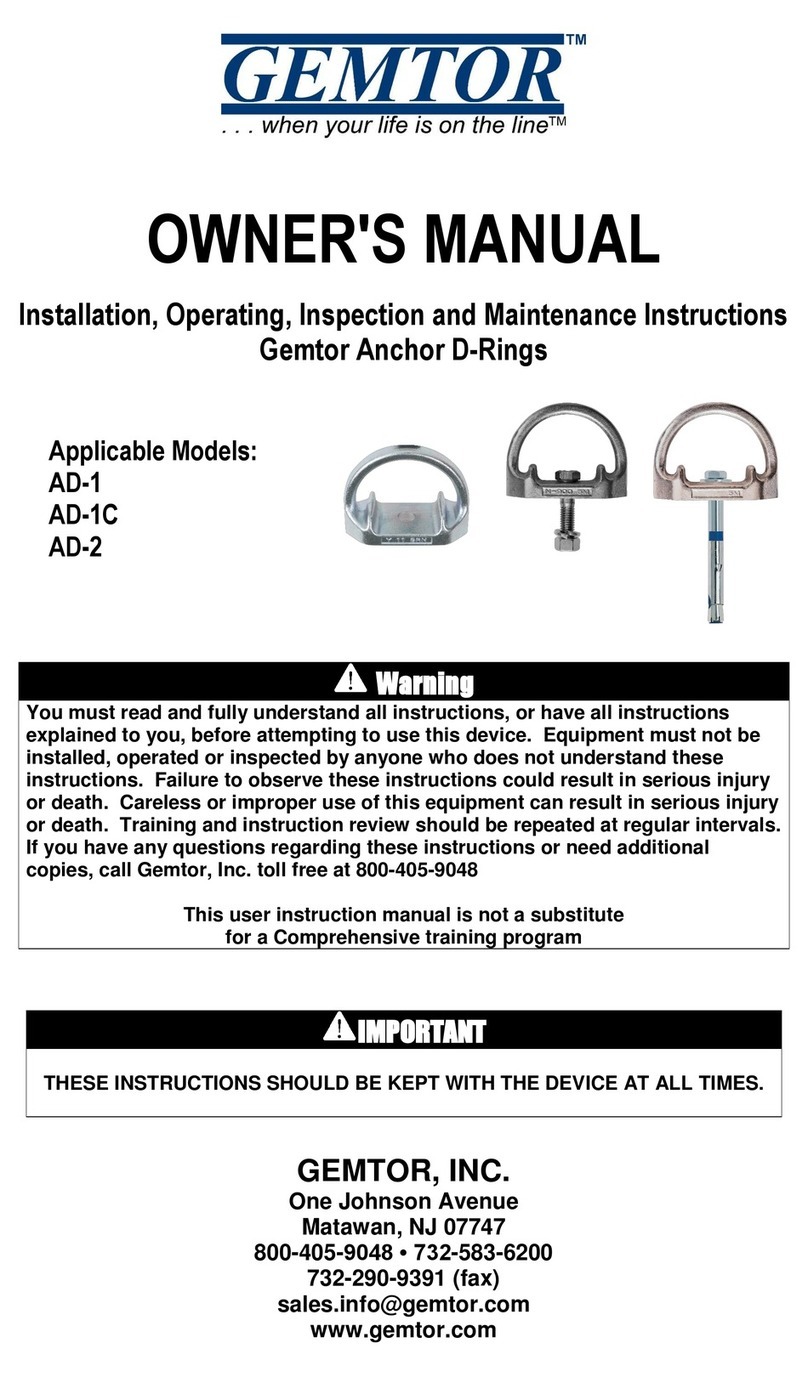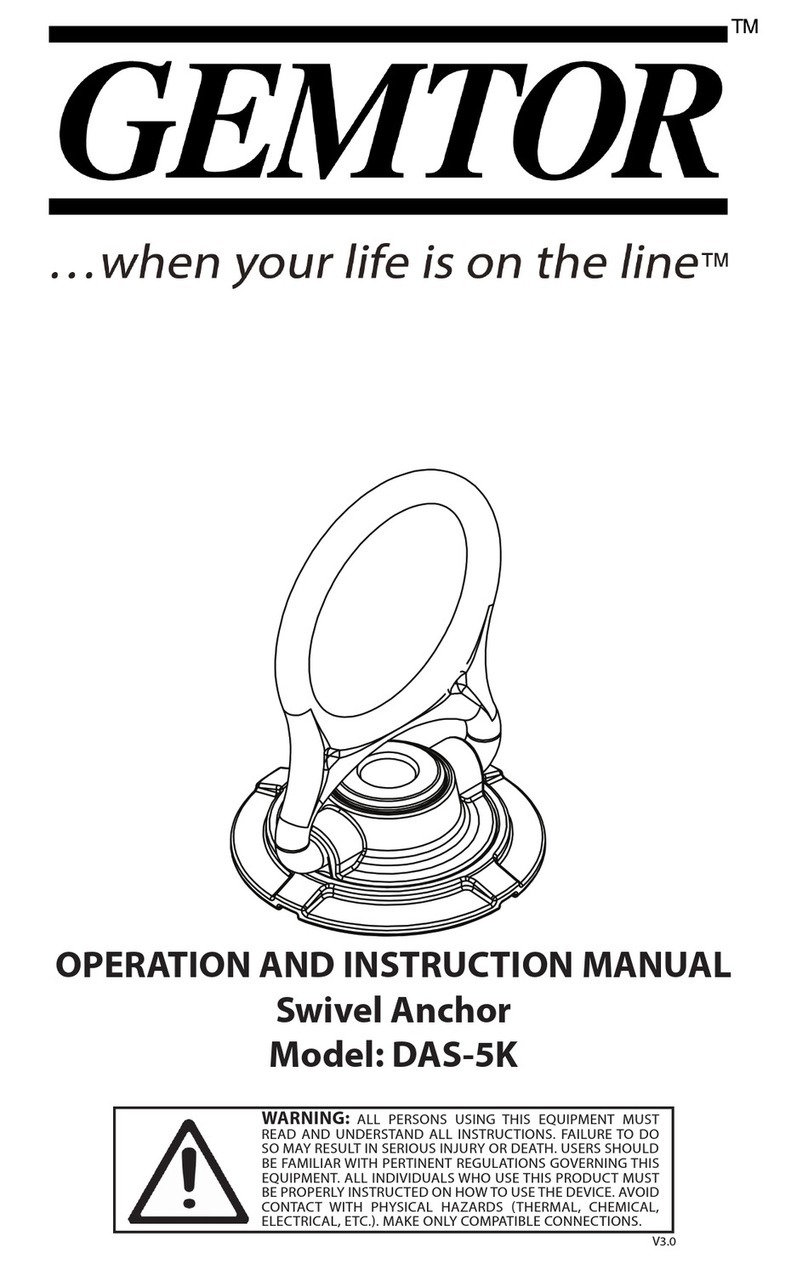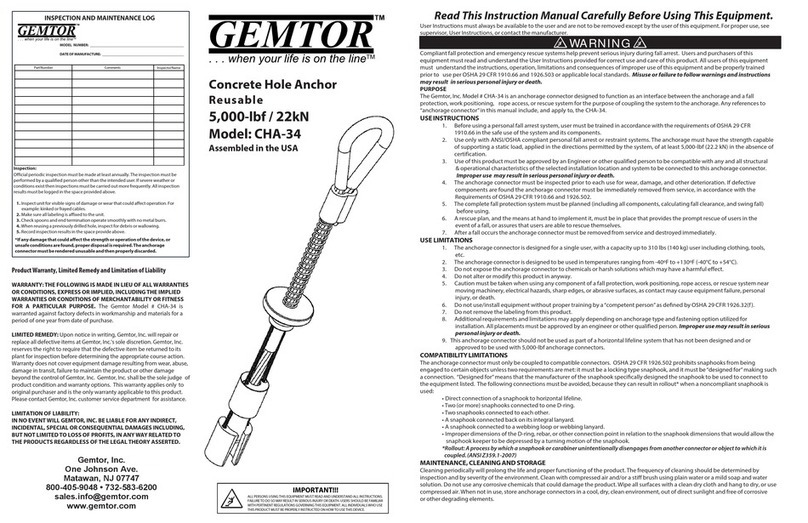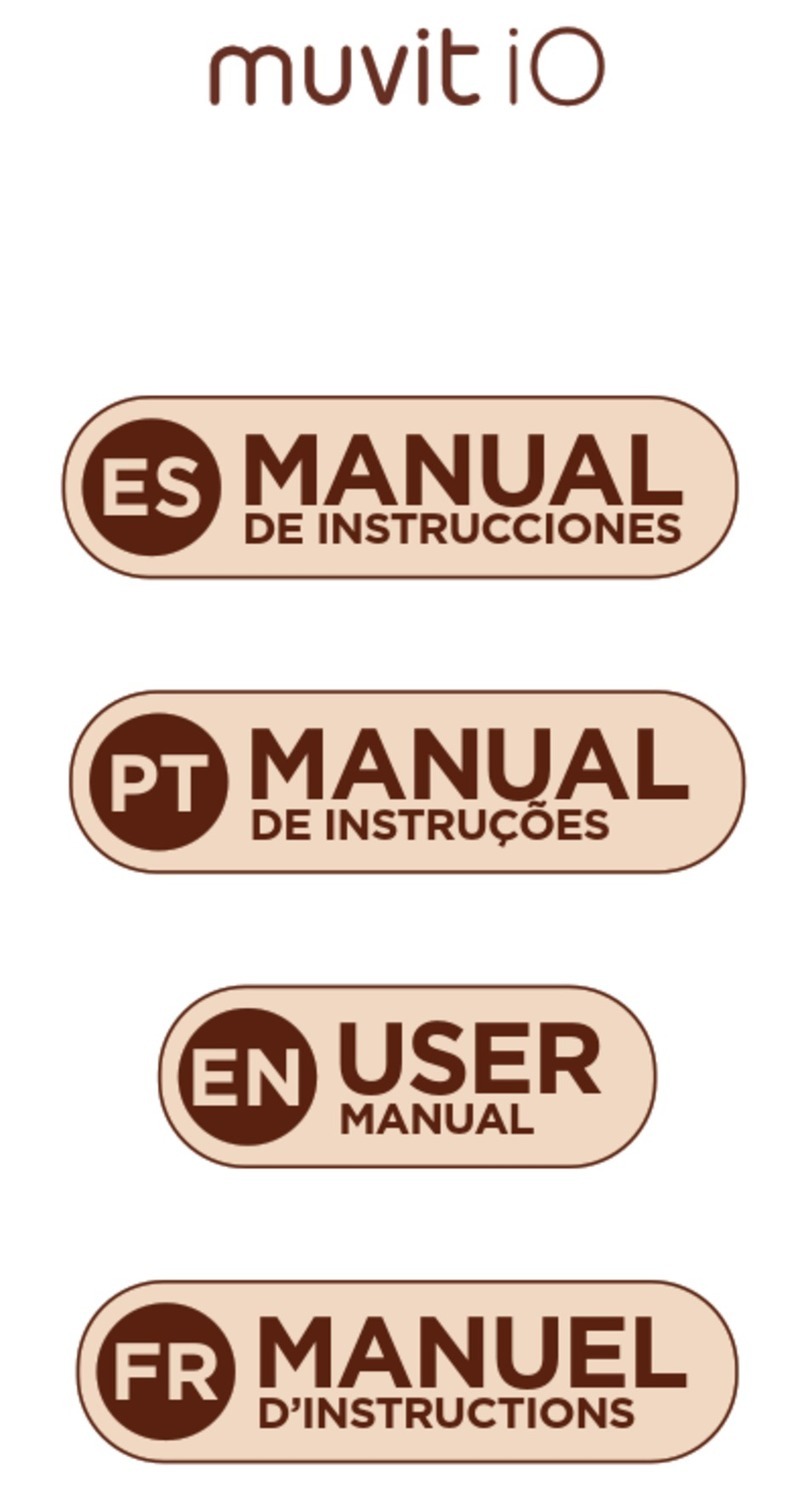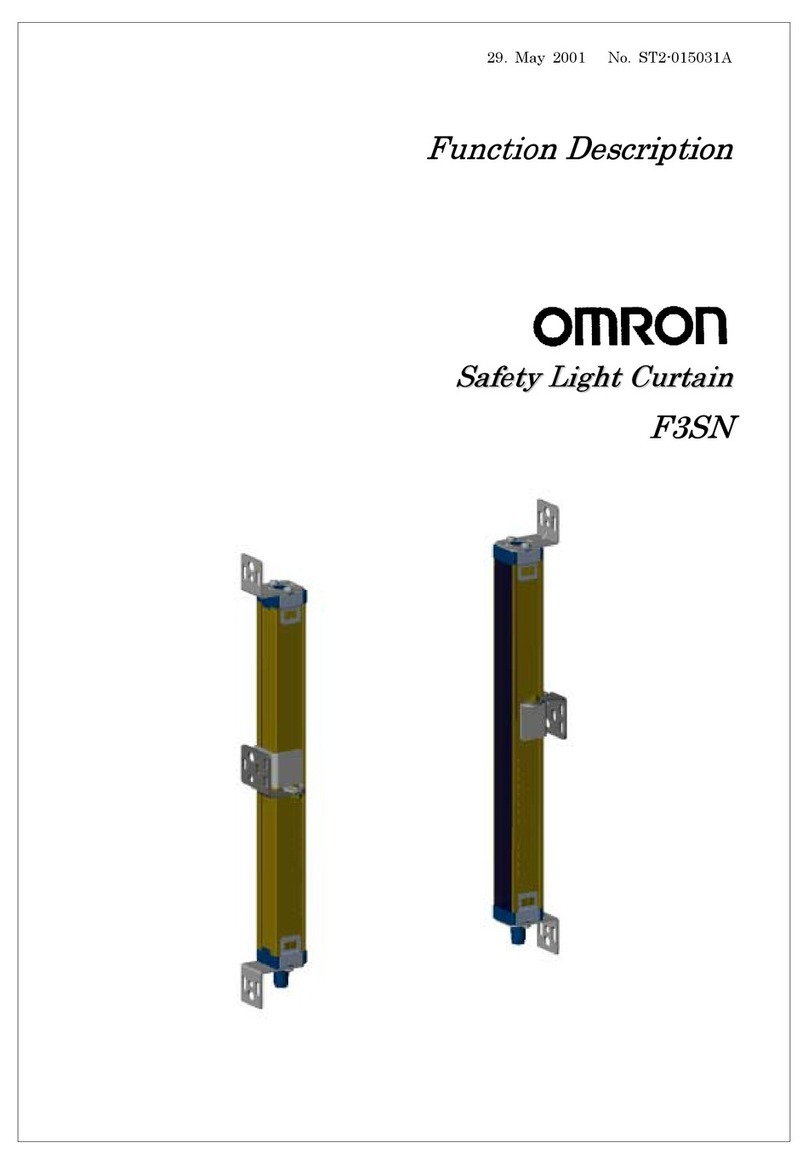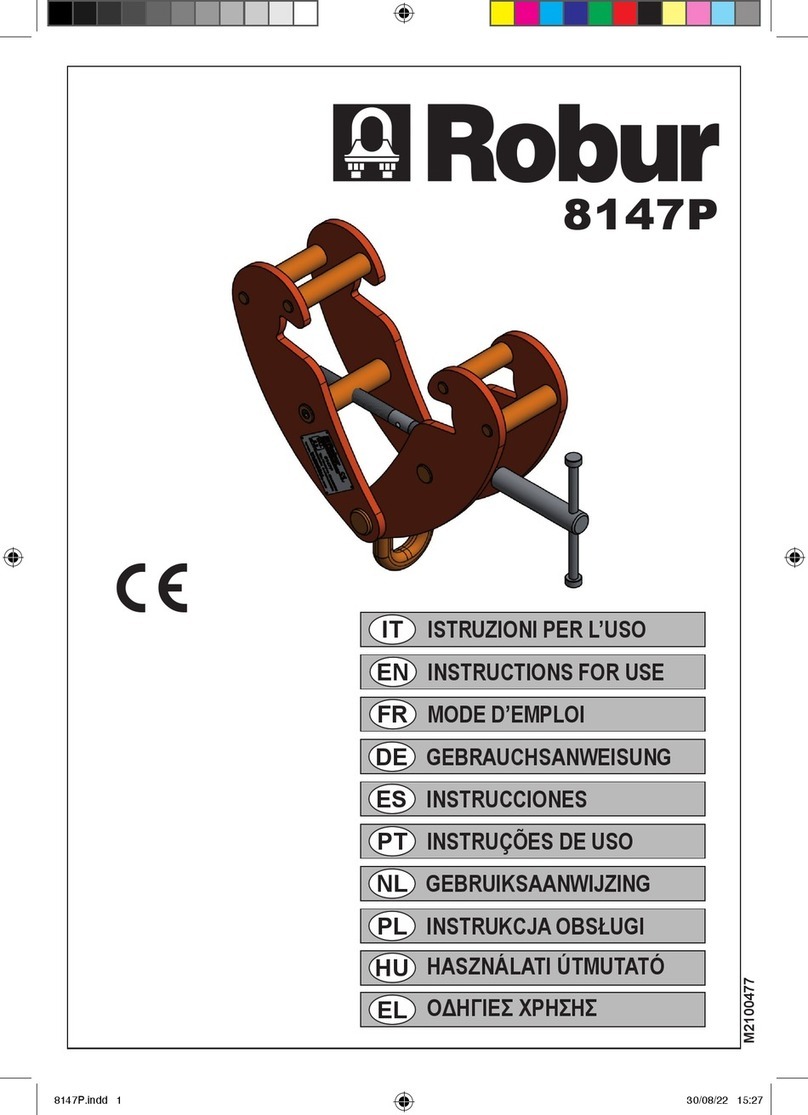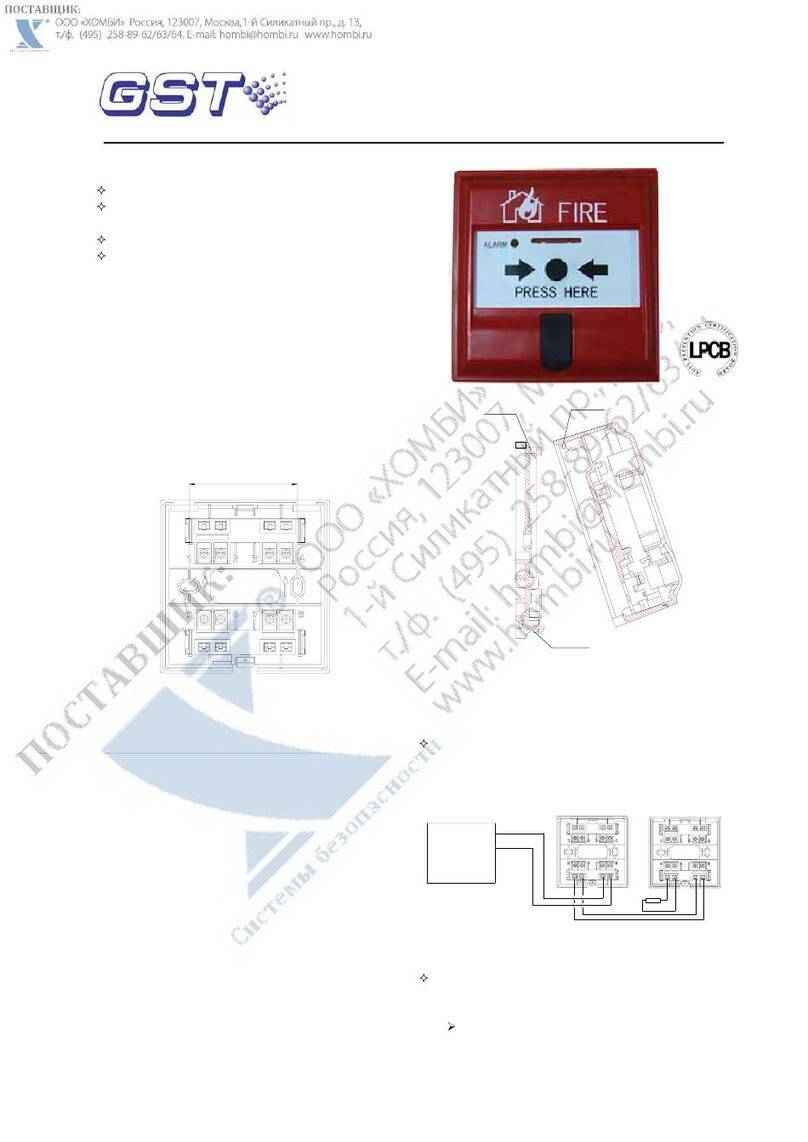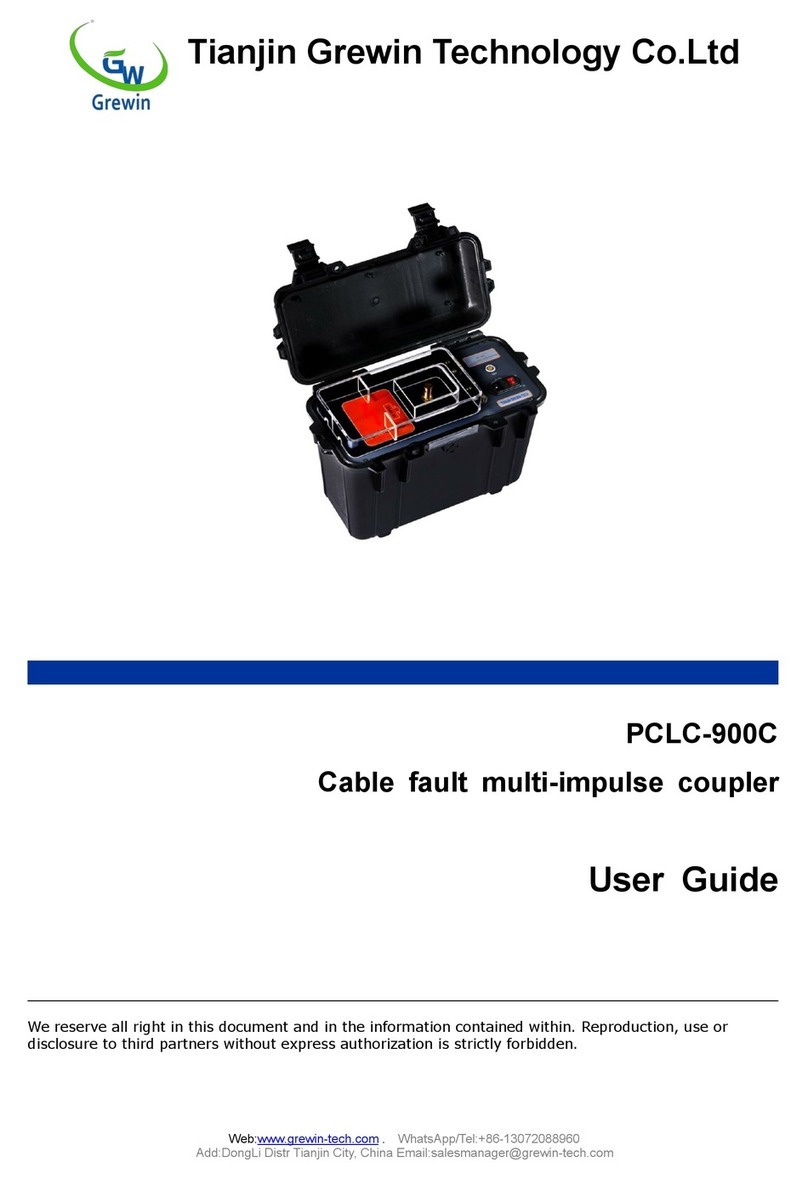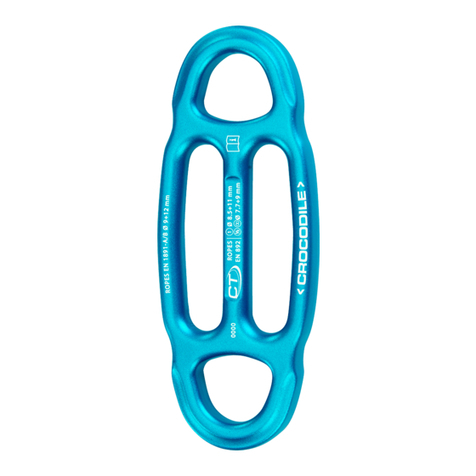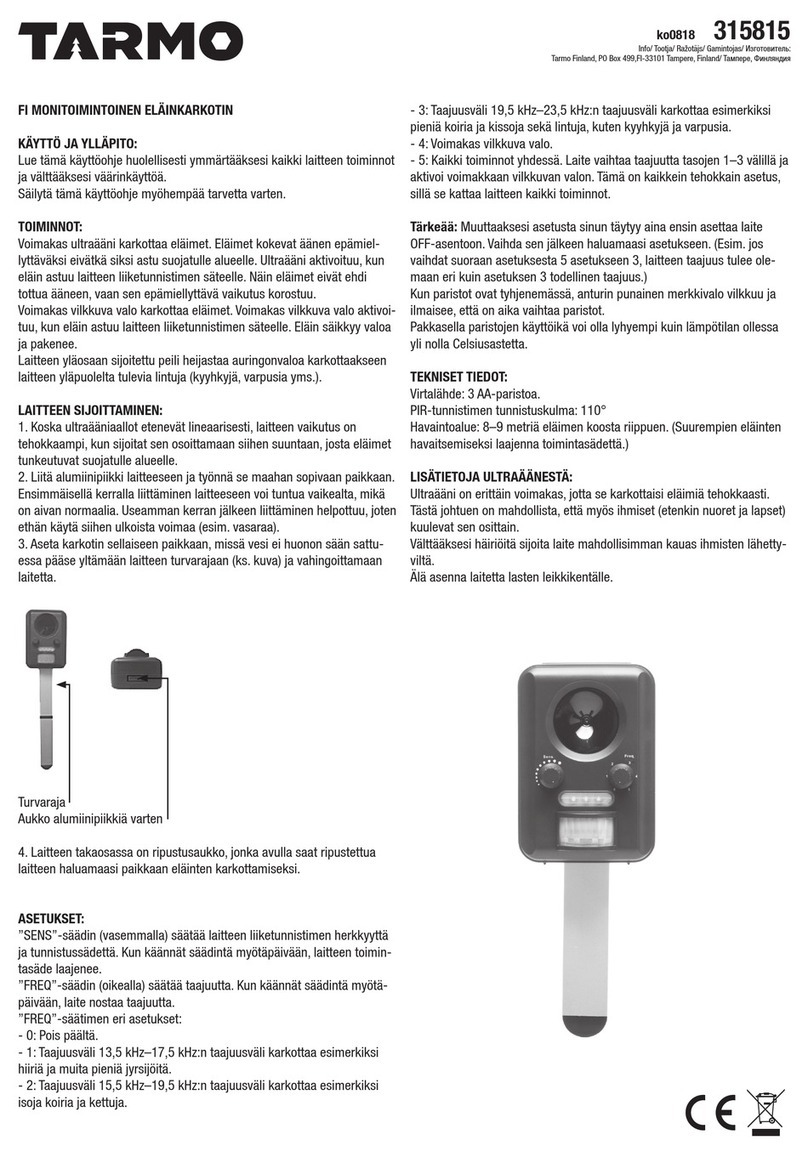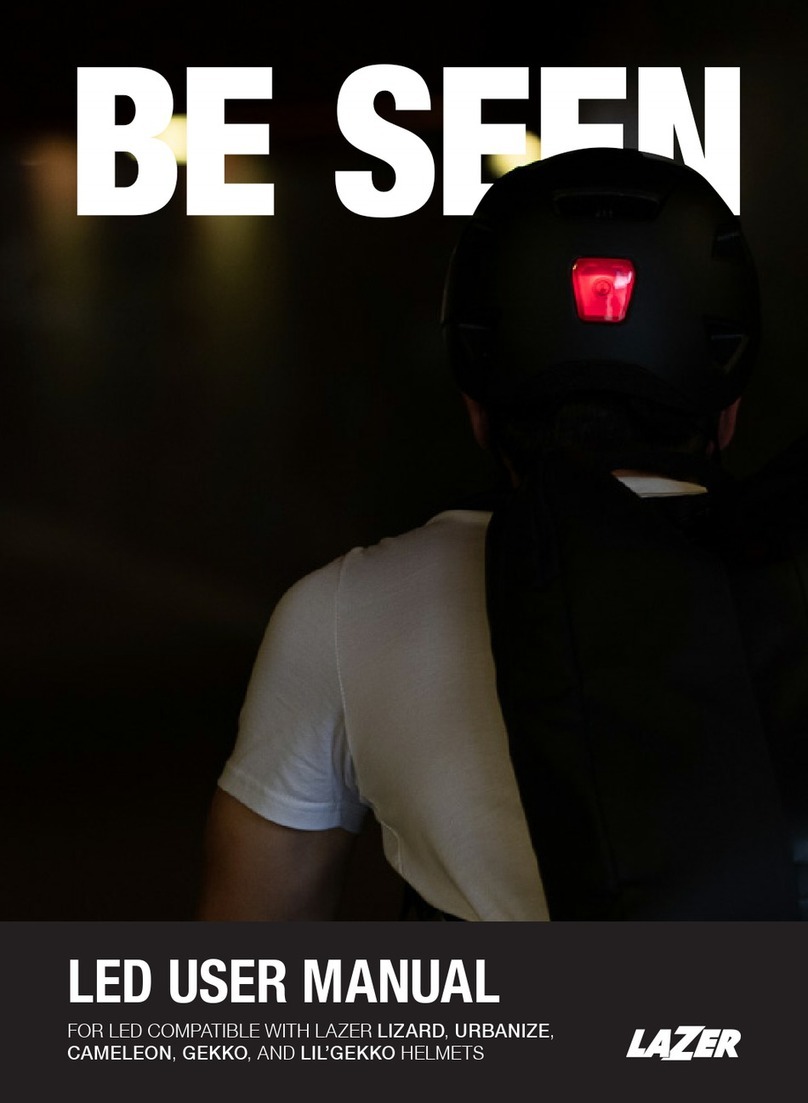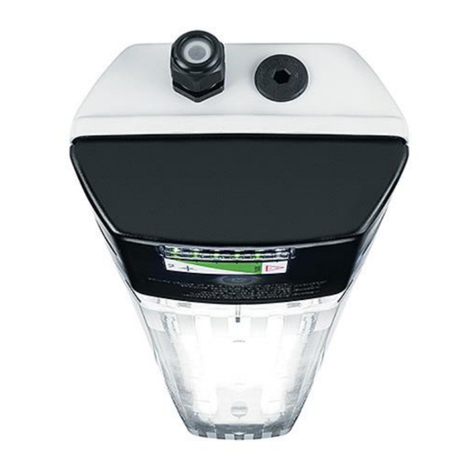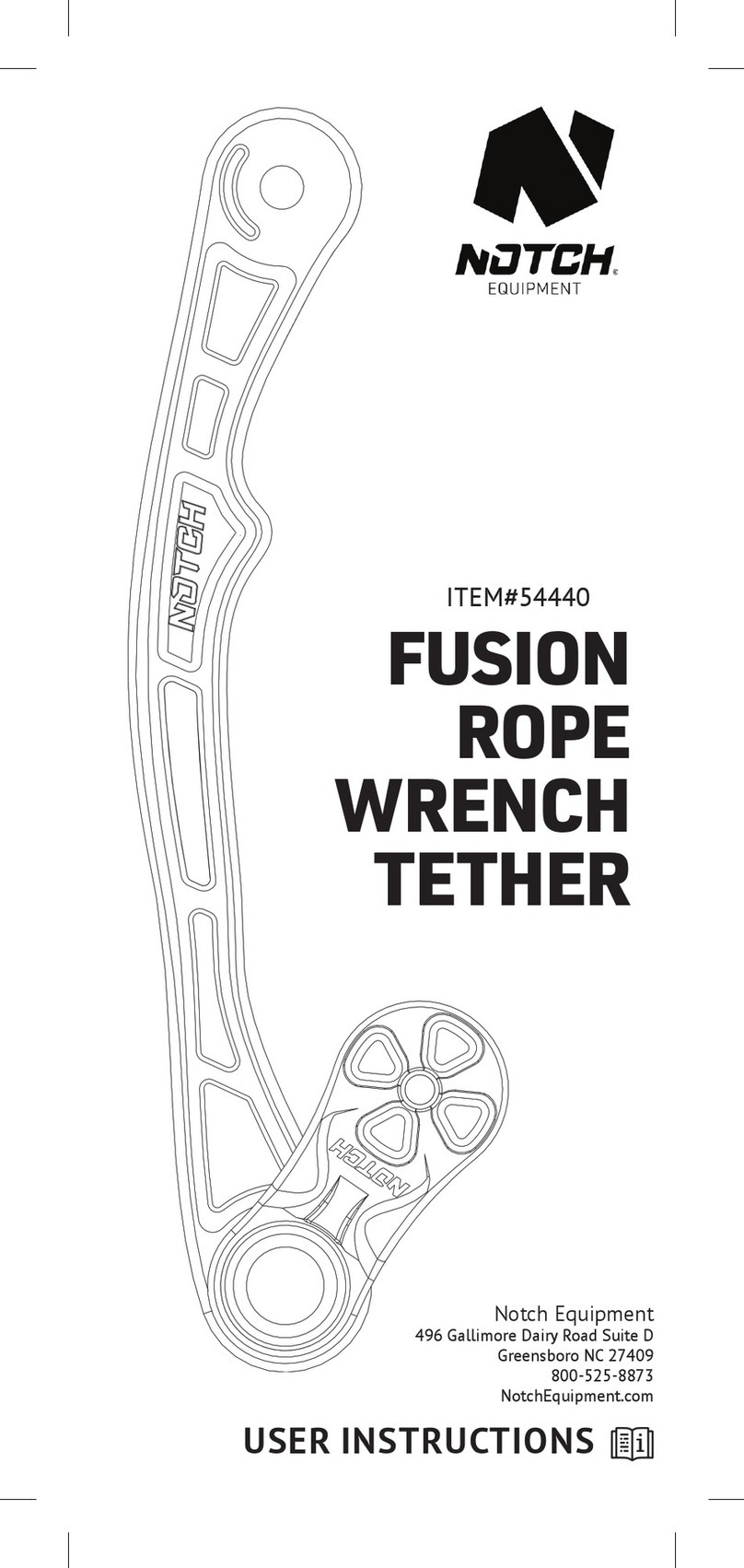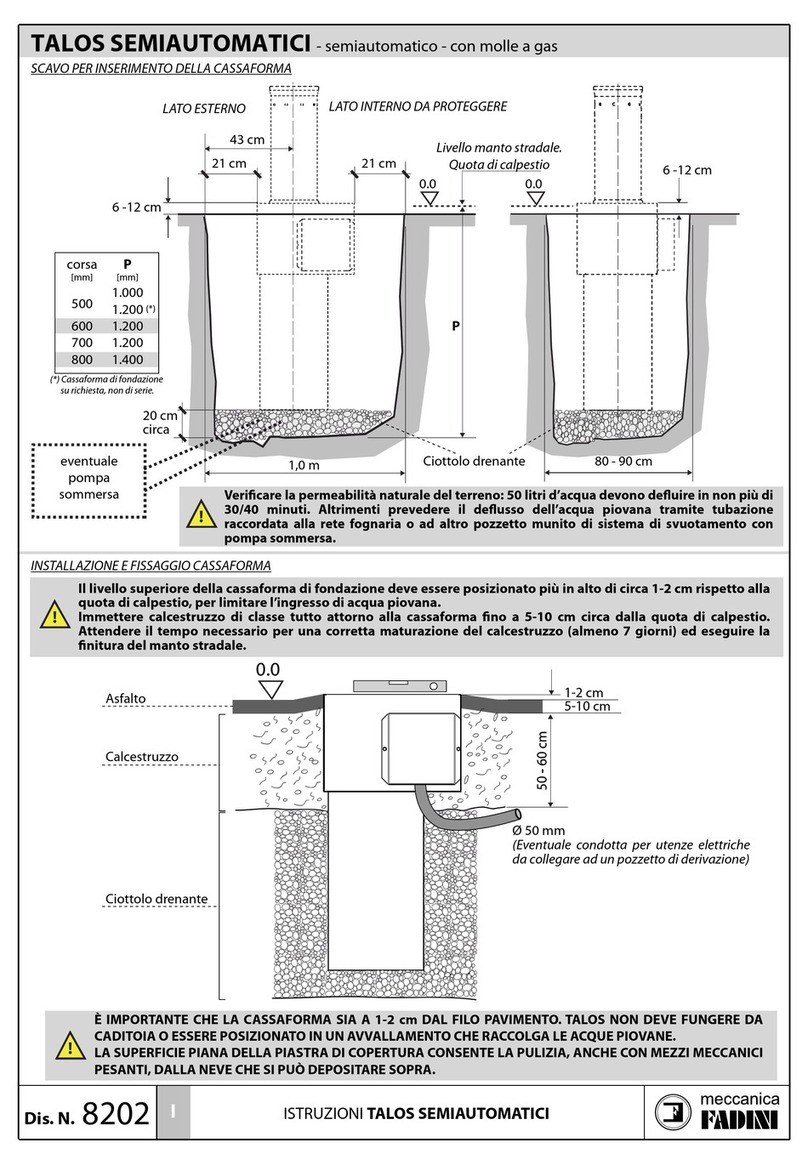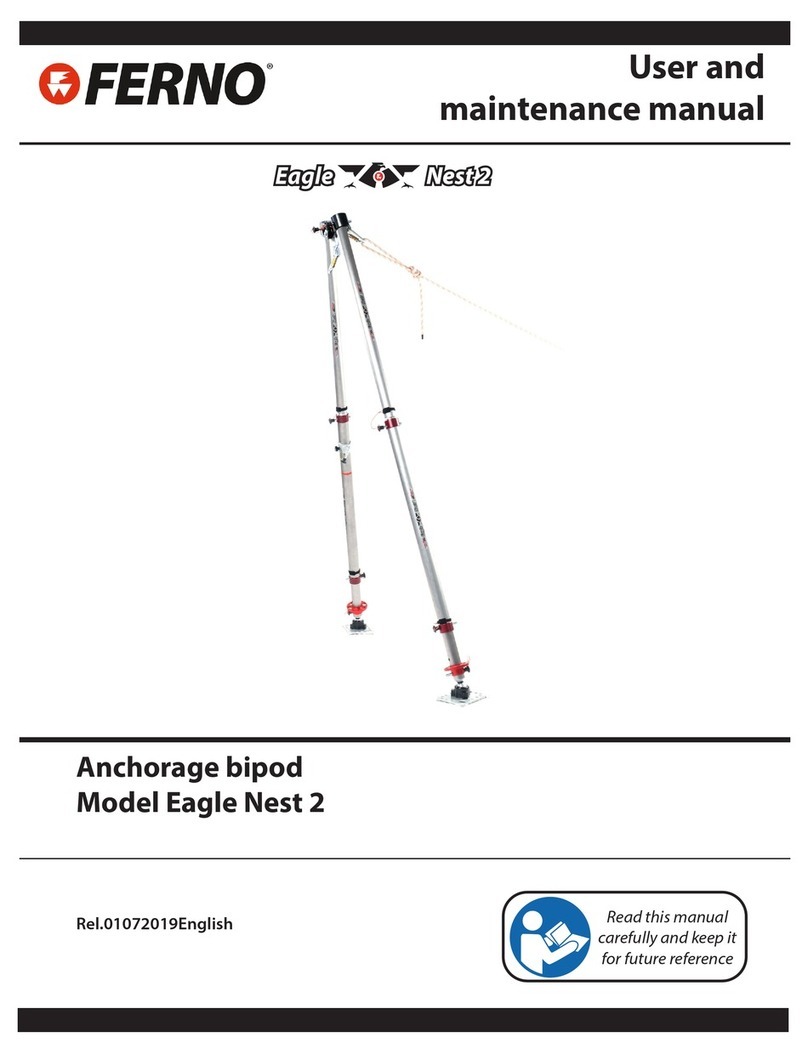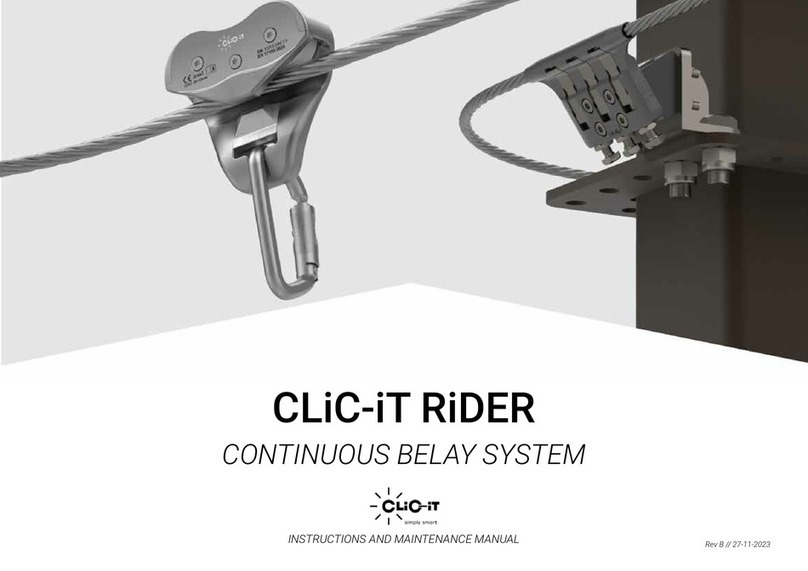Gemtor SBT-161 Installation instructions

Gemtor, Inc. • One Johnson Avenue • Matawan, NJ 07747
Phone: 732-583-6200 • 800-405-9048 • Fax: 732-290-9391
Web: www.gemtor.com • Email: sales.in[email protected]
User Instruction
Gemtor Beam Trolley
This product meets the requirements ANSI-Z359.1 and ANSI-A10.32, and should be used as part of an employee training program
as required by OSHA.
Figure 1 –SBT-161 Beam Trolley
1.0 APPLICATIONS
1.1 PURPOSE: The Trolley Anchorage Connector is
designed to move along horizontal beams with an attached personal fall arrest system. This trolley is to be used
only as a component of a personal fall arrest system. Do not hang, lift, or support tools or equipment from the
trolley.
A. FALL ARREST: The trolley is used as a component of a personal fall arrest system. Personal fall arrest
systems typically include a self retracting lifeline, connector to attach the self retracting lifeline to the trolley,
and full body harness. A personal fall arrest system is used where a free fall is possible before the fall is
arrested.
1.2 LIMITATIONS: Consider the following application limitations before using this equipment:
A. BEAMS: The trolley may be used on beam flanges 4 inches to 14 inches wide and up to 1 1/8 inches thick.
The beam structure must meet the strength requirements specified in section 2.4. The beam must be
horizontal and level.
B. CAPACITY: The trolley is designed for use by person with a combined weight (clothing, tools, etc.) of no
more than 310 lbs. Only one personal fall arrest system may be connected to a single trolley.
C. PERSONAL FALL ARREST SYSTEM: Personal fall arrest systems used with the trolley must meet the
system requirements as specified in section 2.5.
D. FREE FALL: Personal fall arrest systems used with the trolley must be rigged to limit the free fall to six feet.
E. FALL CLEARANCE: There must be sufficient clearance below the user to arrest a fall before the user strikes
the ground or other obstruction. The clearance required is dependent on the following factors:
• Elevation of Trolley • Connecting subsystem length
• Deceleration distance • Movement of harness attachment element
• Worker height • Free fall distance
F. TROLLEY LOAD ANGLE: Loads imposed on the trolley by the personal fall arrest system must remain within
thirty degrees of the vertical center line of the beam. See Figure 2.
WARNING: This product is part of a personal fall
arrest system. The user must follow the
manufacturer’s instructions for each component of
the system. These instructions must be provided to
the user of this equipment. The user must read and
understand these instructions before using this
equipment. Manufacturer’s instructions must be
followed for proper use and maintenance of this
equipment. Alterations or misuse of this equipment,
or failure to follow instructions, may result in serious
injury or death.
IMPORTANT: If you have questions on the use,
care, or suitability of this equipment for your
application, contact Gemtor, Inc.

Rev. 10-14
©Copyright 2014 Gemtor, Inc.
Page 2 of 6
G. ENVIRONMENTAL HAZARDS: Use of this equipment in
hazardous environments may require additional precautions to
reduce the possibility of injury to the user or damage to the
equipment. Hazards may include, but are not limited to; heat,
caustic chemicals, corrosive environments, high voltage power
lines, explosive or toxic gases, moving machinery, and sharp
edges.
H. TRAINING: This equipment is intended to be installed and used by
persons trained in its application and use.
1.3 APPLICABLE STANDARDS: Refer to applicable local, state, and
federal (OSHA) requirements governing this equipment for more
information on anchorage connectors and associated system
components, including OSHA 1910.66, appendix C and
OSHA1926.502.
2.0 SYSTEM REQUIREMENTS
2.1 COMPATIBILITY OF COMPONENTS: Gemtor equipment is designed for use with Gemtor approved components
and subsystems only. Substitutions or replacements made with non-approved components or subsystems may
jeopardize compatibility of equipment and may affect the safety and reliability of the complete system.
2.2 COMPATIBILITY OF CONNECTORS: Connectors are considered to be compatible with connecting elements
when they have been designed to work together in such a way that their sizes and shapes do not cause their gate
mechanisms to inadvertently open regardless of how they become oriented. Contact Gemtor, Inc. if you have any
questions about compatibility.
Connectors (hooks, carabiners, and D-rings) must be capable of supporting at least 5,000 lbs. (22.2kN).
Connectors must be compatible with the anchorage or other system components. Do not use equipment that is
not compatible. Non-compatible connectors may unintentionally disengage. Connectors must be compatible in
size, shape, and strength. Self-locking snaphooks and carabiners are required by ANSI Z359.1, Z359.12 and
OSHA.
2.3 MAKING CONNECTIONS: Only use self-locking snaphooks and carabiners with this equipment. Only use
connectors that are suitable to each application. Ensure all connections are compatible in size, shape and
strength. Do not use equipment that is not compatible. Ensure all connectors are fully closed and locked.
2.4 ANCHORAGE STRUCTURE STRENGTH: The structure to which the trolley is installed must sustain static loads
in the directions permitted by the personal fall arrest system of at least 5,000 lbs. When more than one trolley is
installed on the same anchorage structure, the anchorage structure strength must be multiplied by the number of
personal fall arrest systems attached to the structure.
From OSHA 1926.500 and 1910.66: Anchorages used for attachment of a personal fall arrest system shall be
independent of any anchorage being used to support or suspend platforms, and must support at least 5,000 lbs.
per user attached; or be designed, installed, and used as part of a complete personal fall arrest system which
maintains a safety factor of at least two, and is supervised by a qualified person.
2.5 PERSONAL FALL ARREST SYSTEM: Personal fall arrest
systems used with this equipment must meet applicable local,
state, and federal (OSHA) requirements. A personal fall arrest
system incorporating a full body harness must be capable of
arresting a user’s fall with a maximum arresting force of 1,800 lbs.,
and limit the free fall distance to six feet or less. The deceleration
distance must be 42” or less.

Rev. 10-14
©Copyright 2014 Gemtor, Inc.
Page 3 of 6
Figure 5 –Swing Falls
Figure 4 –Fall Clearance
3.0 INSTALLATION AND USE
3.1 BEFORE EACH USE of this equipment inspect it according to section 5.0.
3.2 PLAN your fall arrest system before installing and using this equipment.
Consider all factors affecting your safety during use. The following list gives some
important points to consider when planning your system:
A. ANCHORAGE BEAM: Select a rigid anchorage beam that is capable of
supporting the loads specified in section 2.4. Joints between beam sections
must be flush to allow the trolley to pass over smoothly. The beam must have
end stops at each end to prevent the trolley from rolling off the beam. The end
stops must be sized and positioned to safely stop the trolley. The trolley
should not catch or hang-up on the end stop; the trolley must be able to freely
return in the opposite direction after contacting the end stop. See Figure 3.
B. FALL CLEARANCE: See Figure 4. There must be sufficient clearance in your
fall path to prevent striking an object or lower level in the event of a fall. The
amount of clearance required is dependent on the application. See personal
fall arrest system manufacturer’s instructions for information on calculating fall
clearance.
C. SWING FALLS: See Figure 5. Swing falls occur when the anchorage point is
not directly overhead. The force of striking an object in a swing fall may cause
serious injury or death. Minimize swing falls by working as directly below the
anchorage point as possible. Do not permit a swing fall if injury could occur.
Swing falls will significantly increase the clearance required when a self
retracting lifeline or other variable length connecting subsystem is used. If a
swing fall situation exists in your application contact Gemtor, Inc. before
proceeding.
D. SHARP EDGES: Avoid working where parts of the system will be in contact
with, or abrade against, unprotected sharp edges.
E. AFTER A FALL: Components which have been subjected to the forces of
arresting a fall must be removed from service and destroyed, or returned to an authorized service center for
repair.
F. RESCUE: The employer must have a rescue plan in place when using this equipment. The employer must
have the ability to perform a rescue quickly and safely.
WARNING: Consult with your doctor if there is any reason to doubt
your fitness to safely absorb the shock from a fall arrest. Age and
fitness can seriously affect your ability to withstand falls. Pregnant
women and minors must not use this equipment.
WARNING: Do not alter or intentionally misuse this equipment.
Consult with Gemtor, Inc. if using this equipment with components or
subsystems other than those described in this manual. Some
subsystem and component combinations may interfere with the
operation of this equipment.

Rev. 10-14
©Copyright 2014 Gemtor, Inc.
Page 4 of 6
WARNING: Training must be conducted without exposing the trainee to a fall hazard. Training should be repeated
on a periodic basis.
3.3 INSTALLATION:
ATTACHING TROLLEY TO BEAM:
Step 1. To open one side of the trolley, unscrew the counter nut and the handle as much
as possible.
Step 2. Pull the (moveable) plate with wheels away from the (stationary) plate with
wheels.
Step 3. Place the (stationary) plate with wheels on the bottom flange of the beam with
the connection shackle hanging down.
Step 4. Slide the (moveable) plate with wheels, so all four vertical (large) wheels are
resting on the top part of the bottom flange of the
I-beam and the horizontal (small) wheels are almost touching (distance between
the flange and the horizontal wheels no more then 1/8”) the sides of the flange.
Step 5. Screw the handle and the counter nut back to hold the (moveable) plate at a
distance of no more then 1/8” from the side of the flange.
Make sure that the trolley is capable of traveling along the whole I-beam before
using
If the beam flange is too wide to install the I-Beam Trolley, DO NOT USE.
3.4 ATTACHING PERSONAL FALL ARREST SYSTEM TO TROLLEY: Attach your personal fall arrest system to the
anchorage point. When using a hook or carabiner to connect to the anchorage, ensure roll-out cannot occur. Roll-
out occurs when interference between the hook and mating connector causes the hook gate to unintentionally
open and release. Self-locking snaphooks and carabiners should be used to reduce the possibility of roll-out. Do
not use hooks or connectors that will not completely close over the attachment object. Do not connect snaphooks
or carabiners to each other. See personal fall arrest system manufacturer’s instructions for connecting
subsystems used with the trolley.
4.0 TRAINING
4.1 The user and purchaser of this equipment must be familiar with the instructions, operating characteristics,
application limits, and the consequences of improper use of this equipment. Users and purchasers must be
trained in the correct care and use of this equipment.

Rev. 10-14
©Copyright 2014 Gemtor, Inc.
Page 5 of 6
5.0 INSPECTION
5.1 FREQUENCY:
• Before Each Use: Inspect trolley according to sections 5.2 and 5.3.
• Annually: The trolley must be inspected by a competent person other than the user. See sections 5.2 and
5.3 for inspection guidelines.
5.2 INSPECTION STEPS:
Step 1. Inspect trolley for damage. Look for cracks or deformities. Look for excessive wear or damage to the
anchorage point.
Step 2. Inspect trolley wheels. All wheels should turn freely and be undamaged.
Step 3. Inspect entire unit for corrosion.
Step 4. Record inspection results in section 7.0.
5.3 If inspection reveals an unsafe or defective condition remove from service and destroy or contact
Gemtor, Inc. for repair.
6.0 MAINTENANCE, SERVICING, STORAGE
6.1 MAINTENANCE: Clean the trolley using water and mild detergent. Wipe dry with a clean cloth and hang to air dry.
Do not force dry with heat. An excessive build-up of dirt, paint, etc. may prevent the trolley from working correctly.
No lubrication is required.
6.2 SERVICING: Servicing must be completed by Gemtor, Inc. or an authorized service center.
6.3 STORAGE: Store this equipment in a cool, dry, clean environment. Inspect the trolley after extended storage.
WARNING: If this equipment is subjected to the forces of a fall arrest, it must be removed from service and
destroyed, or returned to Gemtor, Inc. for inspection and repair.

Rev. 10-14
©Copyright 2014 Gemtor, Inc.
Page 6 of 6
7.0 INSPECTION AND MAINTENANCE LOG
DATE OF MANUFACTURE: _____________________________________________________
MODEL NUMBER: _____________________________________________________________
DATE PURCHASED: ___________________________________________________________
IF YOU HAVE ANY QUESTIONS CONCERNING THE CORRECT USAGE OF THIS OR
ANY GEMTOR PRODUCT, DO NOT USE, CALL (TOLL FREE) 1-800-405-9048
Do not try to adjust, repair or modify Gemtor Beam Trolleys; for prompt service, please contact:
GEMTOR, INC.
One Johnson Avenue
Matawan, NJ 07747
800-405-9048 • 732-583-6200 • 732-290-9391 (fax)
www.gemtor.com
Inspection
Date
Inspectors Name
Passed
Failed & Reason
Table of contents
Other Gemtor Safety Equipment manuals
